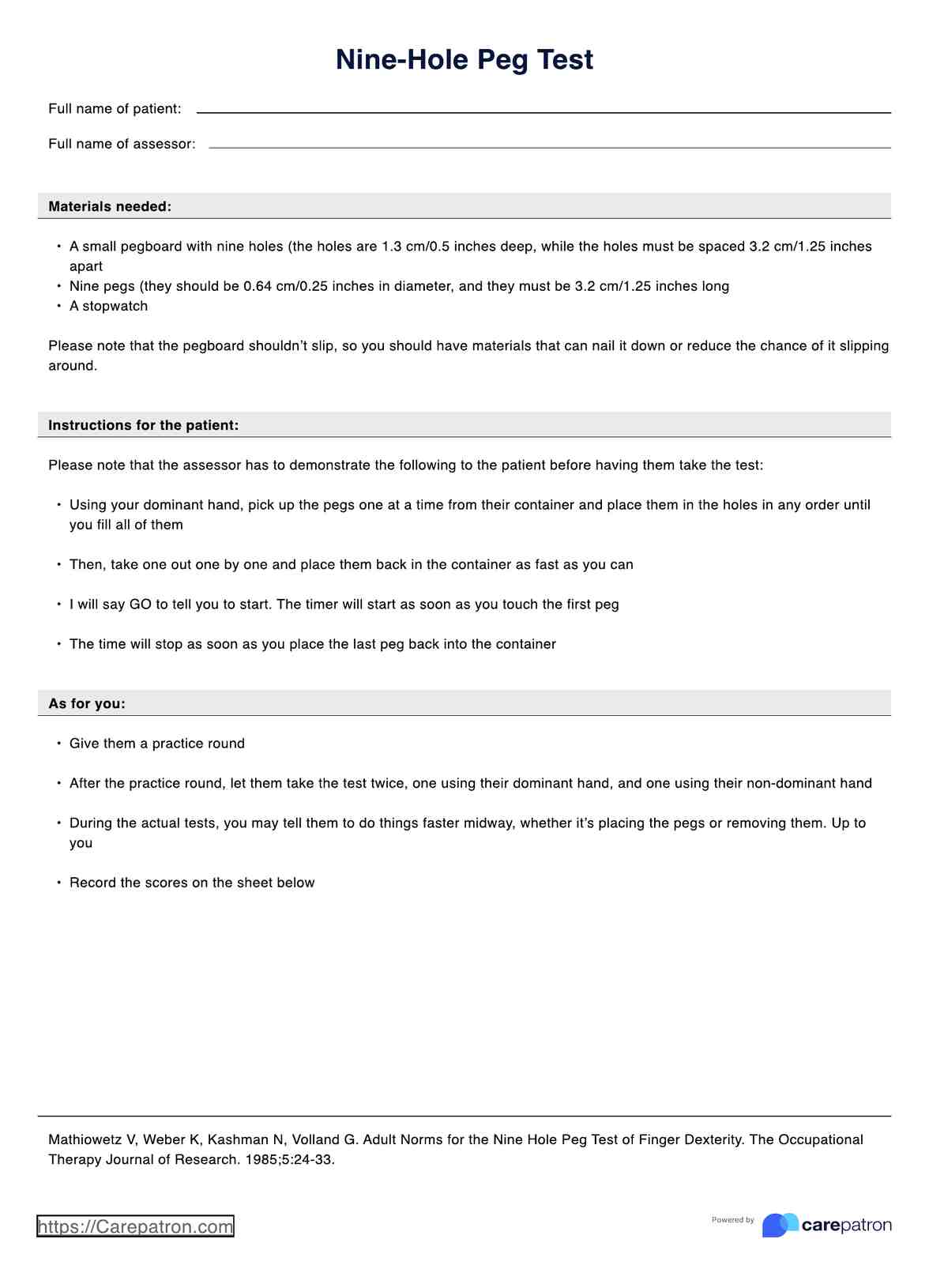No, this is not a diagnostic tool. Rather, it is used to assess the severity of impairment regarding hand function and finger dexterity. This means that the patients are, more often than not, already diagnosed with neurological disorders or have physical disabilities that impact their hand function and finger dexterity.

Nine-Hole Peg Test
If you are treating a patient with neurological disorders, use the Nine-Hole Peg Test to assess their motor functions, specifically their hands!
Nine-Hole Peg Test Template
Commonly asked questions
Unless the patient only has problems with their hand function and finger dexterity, then yes. If they have more issues resulting from their neurological disorders and physical ailments, then it would be best to administer other tests because this one is for their hand function and finger dexterity.
Yes, it is safe. Unlike other physical tests, this one does not have them do actions like standing up and sitting down, walking, or reaching. They simply need to be seated and put holes into pegs during the test. If you want to be on the safe side, make sure that the chair they are sitting on is sturdy.
EHR and practice management software
Get started for free
*No credit card required
Free
$0/usd
Unlimited clients
Telehealth
1GB of storage
Client portal text
Automated billing and online payments











